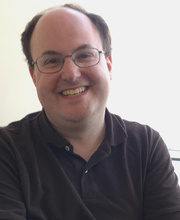Maxwell G. Heiman

Cell architecture in C. elegans
The question I am interested in is, "How do cells get the right shapes and make the right attachments to build organs?" Single cells have amazing morphologies that determine their function -- nowhere more so than in the neurons and glia of our brains. Defects in cell shape lead to birth defects or, in the nervous system, neuropsychiatric disorders. Yet much of what we know about cell shape comes from homogeneous cells grown in a dish.
To address this question, my lab uses the tiny worm C. elegans. In these animals, every cell has been identified and the shapes and connections of each cell have been catalogued -- including its 302 neurons and 50 glia. The fact that these cells develop in such a predictable fashion strongly suggests that there are genetic programs that determine the shape and connections of each cell. We want to identify these genetic programs.
The main methods we use are microscopy and genetics. We use microscopy to visualize individual neurons and glia in live, intact animals. Because C. elegans is small and transparent, and because there are methods for fluorescently labeling single cells, we can easily see many subcellular structures in great detail. Some of the microscopy tools we use include fluorescence deconvolution, light sheet imaging, and super-resolution structured illumination. We use genetics to identify the genes that are required for these structures to form. We treat C. elegans with chemical mutagens to disrupt genes at random, and then visually screen thousands of individuals for mutants with altered morphology of single neurons or glia. We can screen thousands of animals in a day. We use modern genetic methods such as next-generation sequencing, along with classical methods including linkage and complementation, to identify the genes that control cell shape.
With these approaches, we have identified (1) extracellular matrix proteins required for specific classes of neuronal dendrites to anchor to their targets, (2) adhesion molecules required for formation of specific neuron-glia attachments, (3) adhesion molecules that control the lateral arrangements of neurites within a bundle, and (4) a transcription factor that controls the identity of specific subtypes of glia. Each of these factors is also present in humans and, in many cases, they are disrupted in human disease. An emerging theme from our work is that many neuronal and glial structures are assembled by building on top of epithelial scaffolds.
Contact Information
Center for Life Sciences 14047
3 Blackfan Circle
Boston, MA 02115
